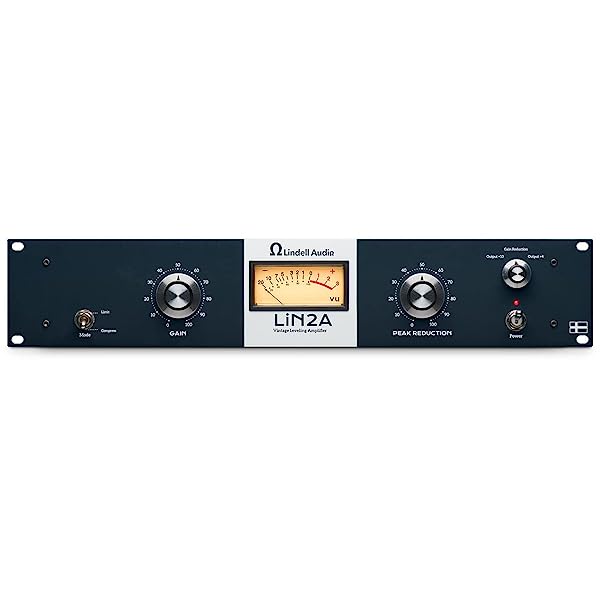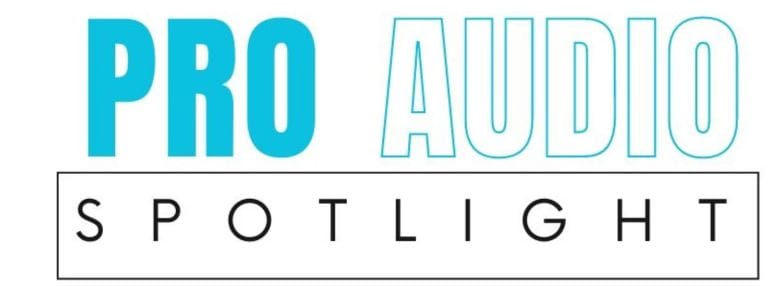LiN2A Vintage Leveling Amplifier

By Adam Gallant
Lindell Audio is a young company out of Sweden and we are excited this month to test out their latest hardware offering, the LiN2A Vintage Levelling Amplifier. The LiN2A is an optical compressor based on the ubiquitous Teletronix LA2A, a staple in recording studio history.
The Lindell version offers all of the sonic characteristics at a fabulous price point. In this test we’ll touch on what makes this style of compression unique and some specifics about the Lindell version that make it stand out.
Out of the Box
The LiN2A has a unique look when compared to other optical compressors of this type. A dark blue finish with a Swedish flag displayed proudly on the bottom right, it has a distinctive quality. The knobs are detented and have a stylish chrome look. The switches are hefty and satisfying to trip. On the front panel we have the simple controls one would expect from an LA2A style; independent gain and peak reduction knobs, a compressor to limiter switch and a VU display switch which goes from displaying gain reduction to output +10 or output +4.
On the back we see quarter inch TRS inputs and outputs alongside the meter calibration knob. The unit is well vented at the top and feels very well made.
Lindell and Black Lion Audio
Optical compression is generally thought to be smooth and transparent sounding and the LiN2A is no exception. The Lindell take on this classic compressor ships with a Black Lion T4BLA Opto Element installed. This Element is at the core of the compressor’s sonic imprint. It is within this cell that the audio signal is converted to light and the attack and release times determined. Black Lion Audio, for readers who aren’t familiar, is a unique pro audio company that got their start modding many aspects of pro audio gear. Black Lion Audio continues to expand their business and Lindell’s decision to incorporate the T4BLA makes for a wonderful pairing. On top of the great sound the T4BLA brings you also have a very high degree of consistency between cells, meaning a stereo pair of these units are matched well enough to provide mix bus compression without any deviation in attack and release times between the left and right sides of a stereo mix.
In Use
A very popular compression chain for vocal recording is a fast, FET style compressor fed into an optical compressor, these two forms of compression will generally tackle most pop vocal dynamics in a really pleasing and familiar way. In our studio, we operate this chain via a Rupert Neve 500 series compressor for the FET style into a JLM audio LA500A, which is a 500 series, non-tube version of an optical compressor. When we swap the JLM audio out and fly the LiN2A into the chain there is a noticeable improvement in the clarity of the signal and transparency of the compression. The LiN2A has all the warm characteristics of a tube compressor with no edge or crunchiness.
In the mix template I use for pop music the UAD Teletronix optical compressor lives in a few spots, for instance as parallel compression on the bass guitar and a second instance as parallel compression on the vocals. I generally hit this parallel compression veryaggressively, and blend it into my mix. The LiN2A takes over this parallel compression job in a very pleasing way. The unit can be pushed to aggressively tame dynamics and the limiter engaged to give a very subtle and satisfying saturation sound. The unit does put off a bit of heat as one would expect. The top vents nicely and I would park this compressor in a rack with some airspace to allow the tubes proper air circulation, making them last as long as possible.
Lindell did a wonderful job making the LiN2A feel robust and sound phenomenal, it is certainly the best sounding recreation of the studio classic at this price point. A small company with an array of studio staples on offer, Lindell is bringing high quality hardware to users at a great price.
Adam Gallant has worked in all facets of digital and audio production, from music composition to location and post audio for television and film. He currently owns and operates The Hill Sound Studio in Charlottetown PE.
He can be reached at adgallant@gmail.com.
